This was my sixth loaf from Beard on Bread. (A continuation of my silly little project that involves trying every recipe in this classic cookbook. I started documenting my trials and tribulations after my fourth loaf.)
I had about three cups of buttermilk left over after making the wildly successful White Free-Form Loaf from Beard’s book, so I decided to make Beard’s Irish soda bread. It was only about a week after St. Patty’s Day, after all, so why not?
The prep
Full disclosure: I was trying to use up not only buttermilk, but whole-wheat flour. Whole-wheat flour purchased early in 2020 and sitting in the fridge ever since. However, it looked and smelled OK, so I went with it.
Early on, Beard’s mixing directions say, after mixing together the dry ingredients, ” … then add enough buttermilk to make a soft dough, similar in quality to biscuit dough but firm enough to hold its shape.” I have no idea what biscuit dough should be like, so I just went with the holding its shape part. For that to work, I had to add about an extra ½ cup of buttermilk.
However, when it was time to knead, I had to compensate with a large-ish but unmeasured amount of extra whole-wheat flour because the dough was helplessly sticking to the board. (I’m estimating between ½ and ¾ cup.) I kneaded and kneaded, but gave up trying to get it “quite smooth and velvety.” Finally, I managed to form the dough into a round loaf and cut a nice cross through the top. (Flouring the knife seems to be a good trick even though it’s not clear any flour actually adhered to the dry knife blade.)
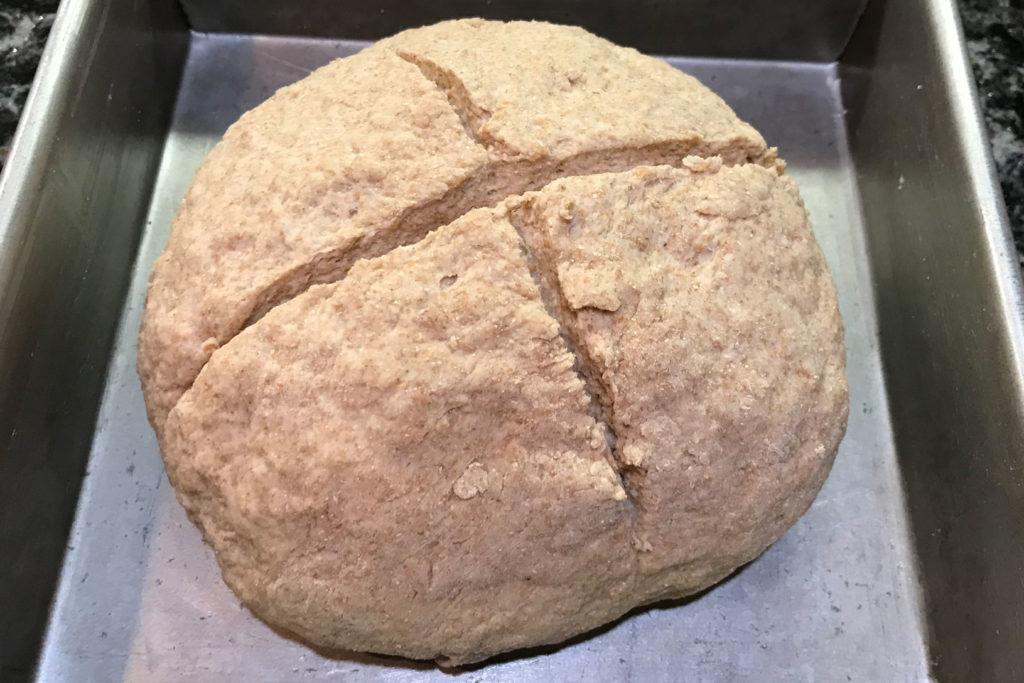
So far, for my first five loaves, Beard’s prescribed oven temperatures and time ranges for baking were spot-on. Because of this I might have relied too much on temp and time and paid less attention to look and feel. Says Beard, “Bake in a 375° oven for 35 to 40 minutes, or until the loaf is nicely browned and sounds hollow when rapped with the knuckles.” Alas, when I pulled out the loaf it probably wasn’t as browned as it should have been, and though I did try the rapping test, I removed the bread from the oven even though it didn’t sound as hollow as perhaps it should have.
The result
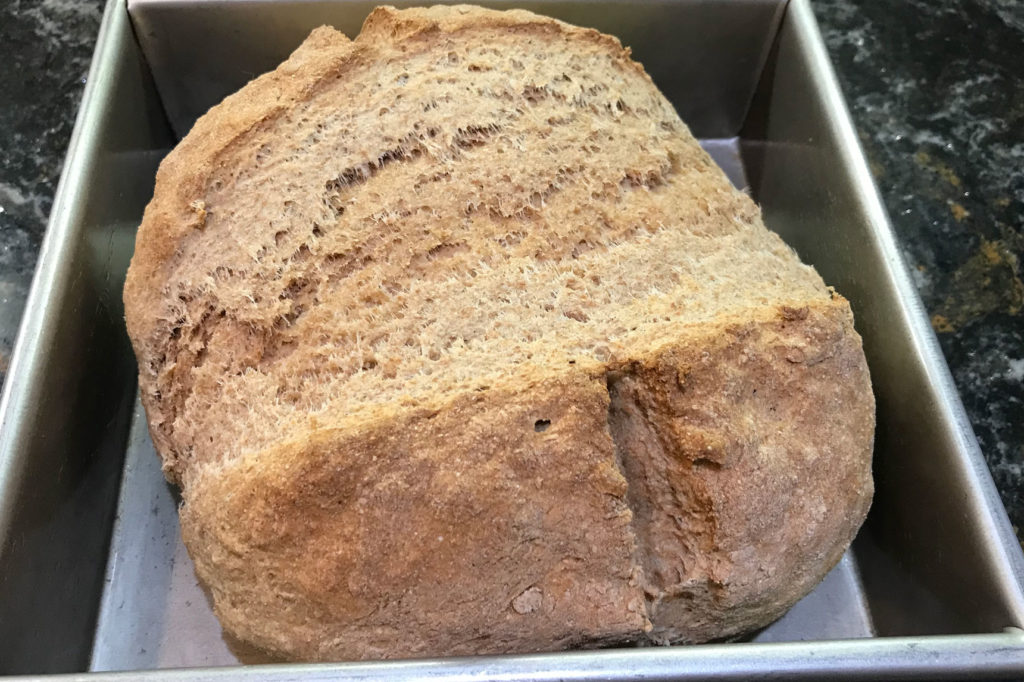
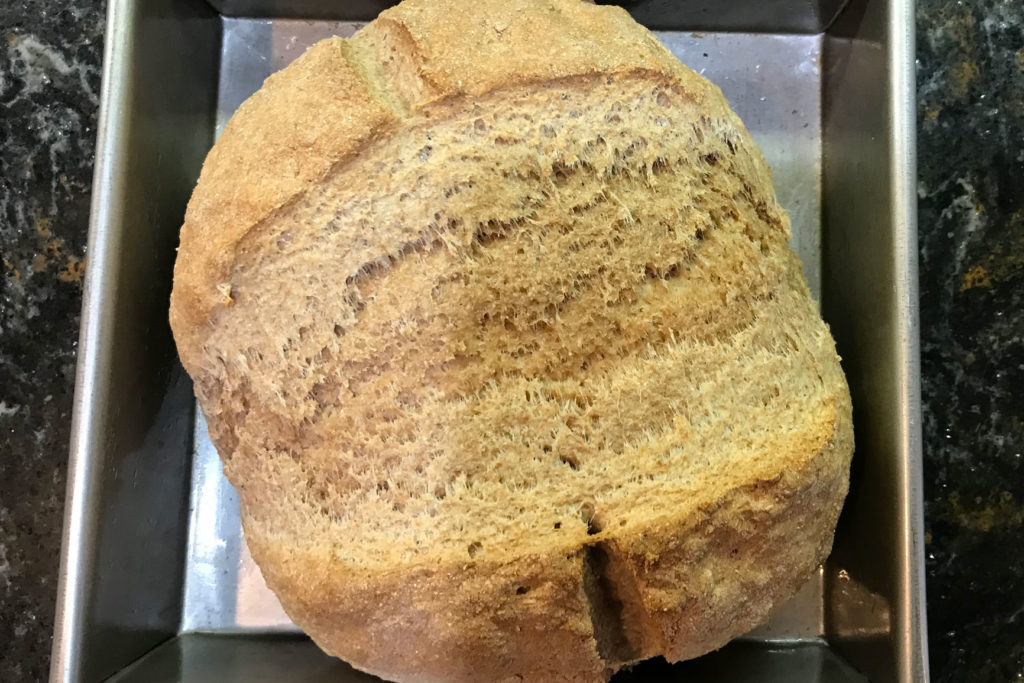
In the headnote, Beard says the bread “has a velvety texture, quite unlike yeast bread, and the most distinctive and delicious taste. Sliced paper thin and buttered, it is one of the best tea or breakfast breads I know, and it makes wonderful toast for any meal.”
OK, let’s see how my loaf measures up to these lofty ideals.
Initially, slices revealed a nicely even bake, a good toast, but a questionable flavor, as if I could taste a few individual components of the loaf — the whole-wheat flour, the baking soda, the salt. I didn’t enjoy that. However, toasted with some butter or margarine or jam, it was very tasty and chewy.
Until …
… I started to slice a bit more towards the center of the loaf only to find that …
Yep, the center of the loaf was a raw, doughy, unsightly mess.
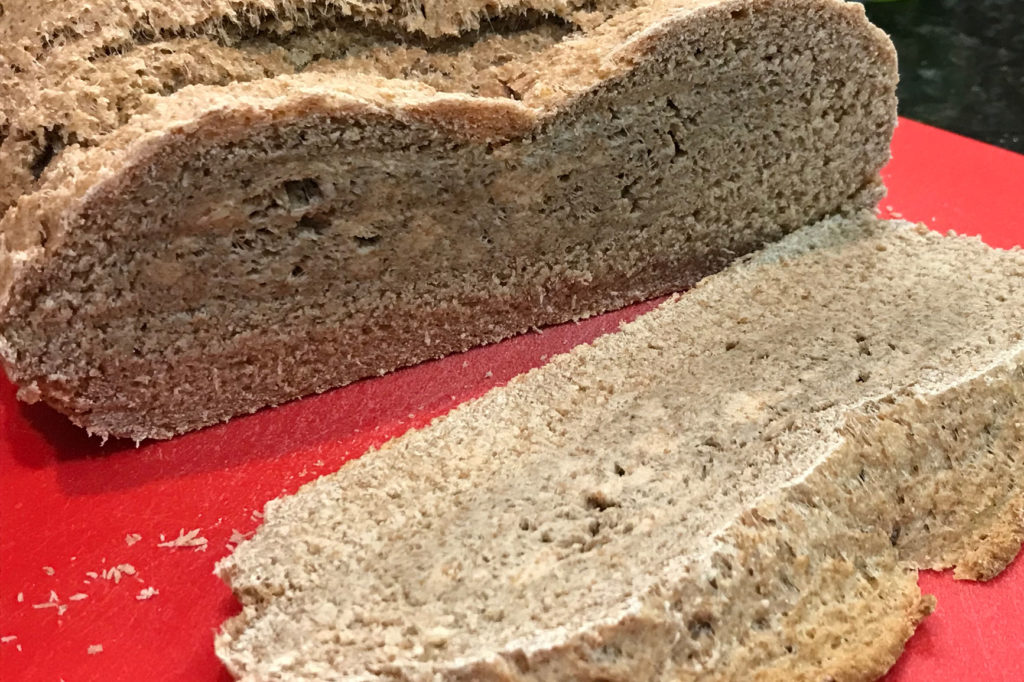
The aftermath
I thought I could save the bread by toasting the raw-ish slices very well, but the raw parts just tasted nasty. I ended up tossing the middle part of the loaf — the slices near the perimeter were fine for toasting and eating.
Initially I had concluded “I’ll never make this again,” but I have since softened my harsh opinion about the loaf. After all, I used old, perhaps slightly rancid, flour and didn’t follow the baking instructions well. And maybe I added too much extra buttermilk. So, maybe I’ll give it another go if I once again find myself with a lot of buttermilk to use up.
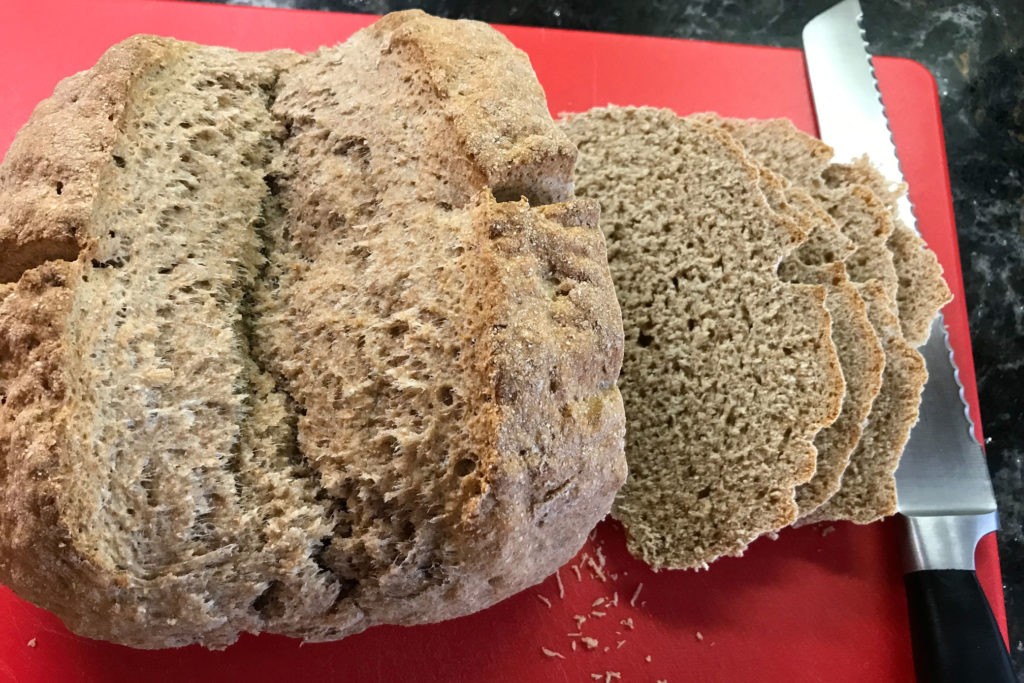
Irish Whole-Wheat Soda Bread
[1 round loaf]
3 cups whole-wheat flour
1 cup all-purpose flour
1 tablespoon salt
1 level teaspoon baking soda
¾ teaspoon double-acting baking powder
1½ to 2 cups buttermilkCombine the dry ingredients and mix thoroughly to distribute the soda and baking powder, then add enough buttermilk to make a soft dough, similar in quality to biscuit dough but firm enough to hold its shape. Knead on a lightly floured board for 2 or 3 minutes, until quite smooth and velvety. Form into a round loaf and place in a well-buttered 8‑inch cake pan or a well-buttered cookie sheet. Cut a cross on the top of the loaf with a very sharp, floured knife. Bake in a preheated 375° oven for 35 to 40 minutes or until the loaf is nicely browned and sounds hollow when rapped with the knuckles. (The cross will have spread open, which is characteristic of soda bread.) Let the loaf cool before slicing very thin; soda bread must never be thick.
Beard on Bread, James Beard, Knopf, 1974, p.164–165 (Headnote and variation excluded)
Irish Whole-Wheat Soda Bread recipe from Beard on Bread by James Beard. Alfred A. Knopf, New York, 1974, p.164–165.
